|
|
|
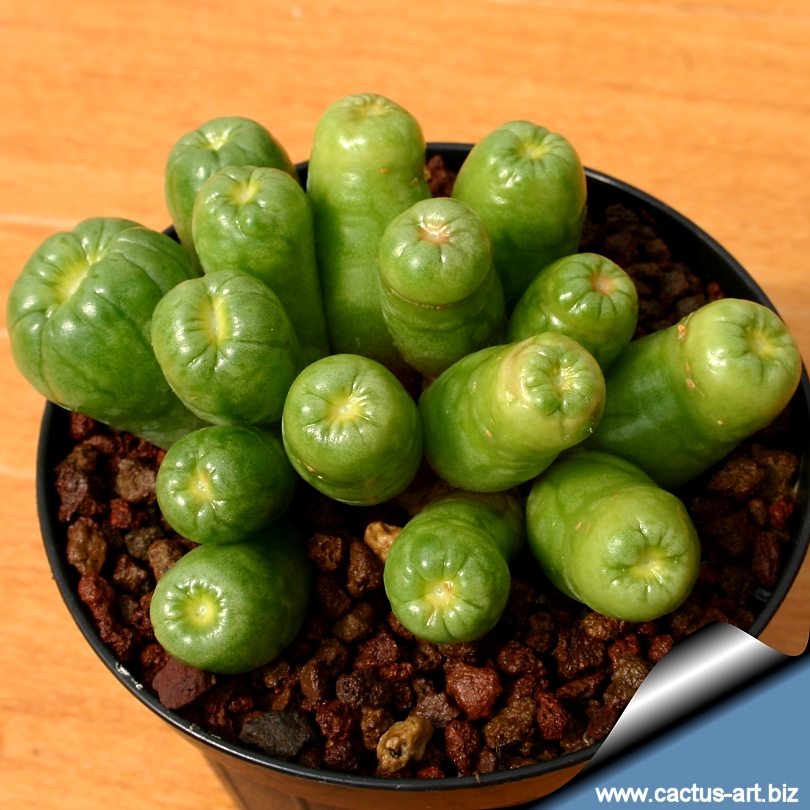
Mammillaria bocacsana "FRED" clone B (bigger and smooth heads)
|
|
Description:
Fred is one of the most famous and strange monstrous cactus cultivar
that forms very rubbery and squishy green and pink glob. It is a
mutation that formed on a normal M. bocasana...it was cut off and
started on it's own. This cultivar shows many growing
variations, with different crested and monstrous shapes. The plant
looks more like some non-cactus
succulent than a
cactus. Rarely a
spine or a
hair,
monstrous or
crested
flowers. It may enlarge to form low, massive
clusteres.
Stem: Soft, smooth, lumpy, rubbery-textured (much like a tumor)
green and pink, some only a few centimetres across. Sometimes it will
grow a branch that reverts back to a normal looking cactus, complete
with spines and flowers (sort of a reverse of how a Fred began), while
the rest of the plant remain mostly monstrous.
|
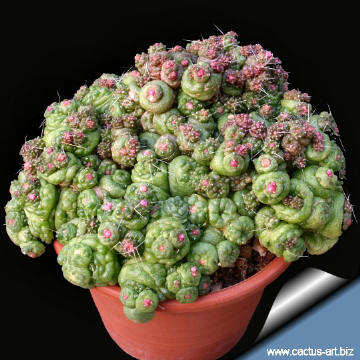
M. bocasana cv. FRED (standard form)
|
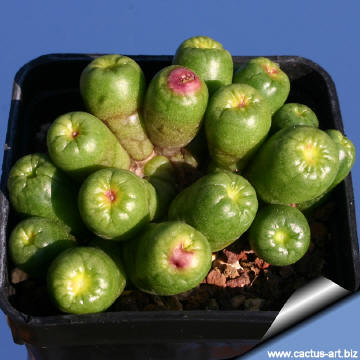
M. bocasana cv. FRED clone B
|
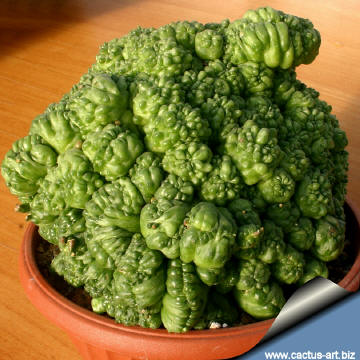
M. bocasana cv. FRED Tubrculate form (Clone C)
|
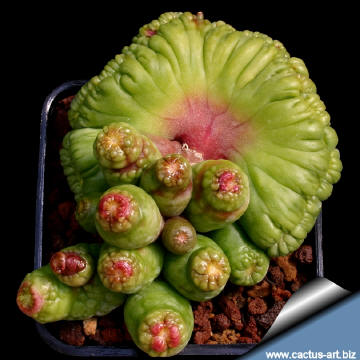
Mammillaria bocasana "FRED" forma cristata
|
|
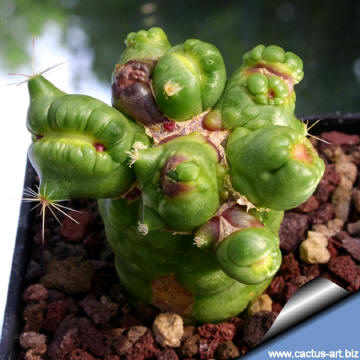
A bizarre shape |
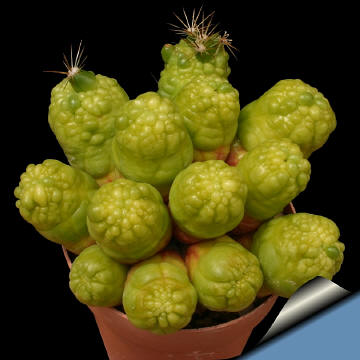
A yellow specimen |
|
|
|
Advertising
|
|
|
|
|
Family:
Cactaceae (Cactus
Family)
Conservation status: Listed in
CITES appendix 2.
Origin:
Garden origin
(Nursery produced cultivar)
Etymology: Named for the guy that discovered
it, this unusual odd
spineless
mutant plant had scientists baffled for quite some time before it
revealed its true self!
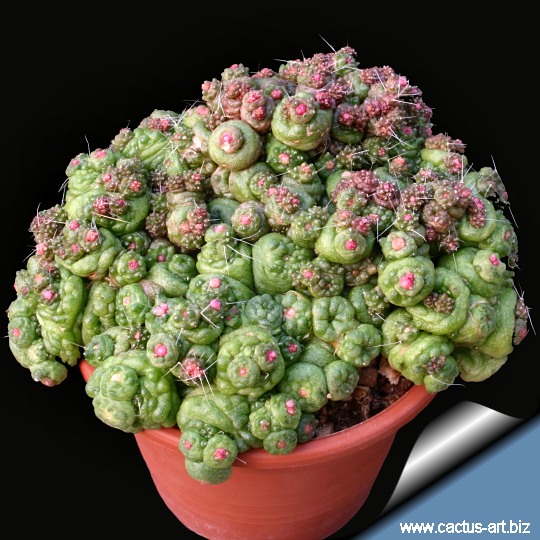
Mammillaria bocasana cv. FRED (Clone A) is a monstrose, old
cultivar
with really weird shapes. A fat and juicy little blob.
|
|
|
|
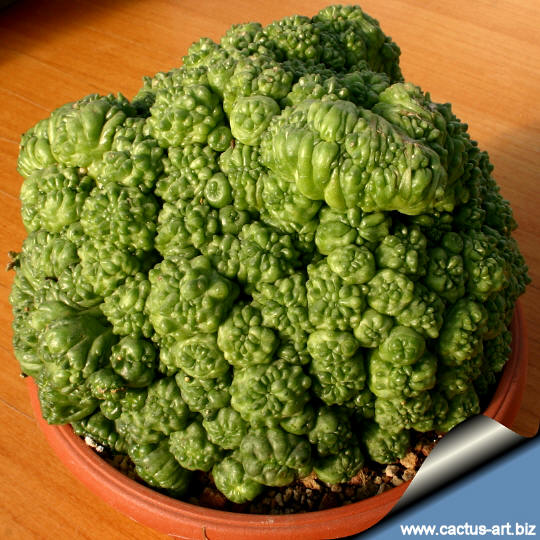
Mammillaria bocasana cv. FRED Tubrculate form (Clone C)
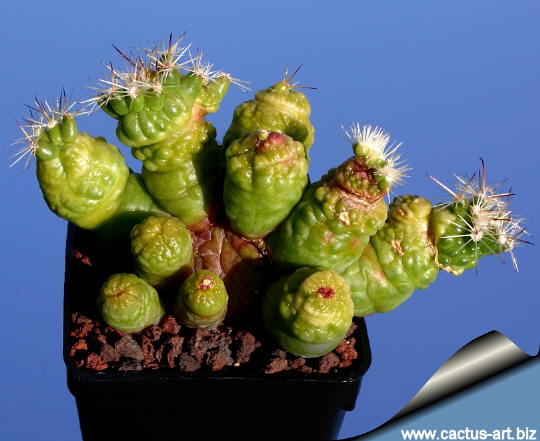
Cultivation: Mammillaria bocasana "Fred" grows well on its
own roots. Keep well
ventilated, as it is prone to
root rot. Protect from
frosts and
freezes. Hates the full sun in summer. It can thrive for years, but
tend to self destruct, especially when it really odd looking. As with
most Freds, it began to die at the base (root rot is common); instead of
giving up on it, you can cut it apart, let it heal and start many plants
from that one.
Propagation: It is easy to take a
Fred and separate the "blog" into many new pieces. Each piece can be
started on its own, with a bit of care, patience and maybe a little
luck. As with most cactus, you can cut a piece, let it dry for a week or
so, and put it into the soil and it will grow new roots, if the
conditions are just right. The best luck is with cuttings that are
3 cm or larger; smaller ones will root, but it takes much more effort to
keep them alive.
Photo of conspecific taxa, varieties, forms and
cultivars of Mammillaria bocasana.

 |
|